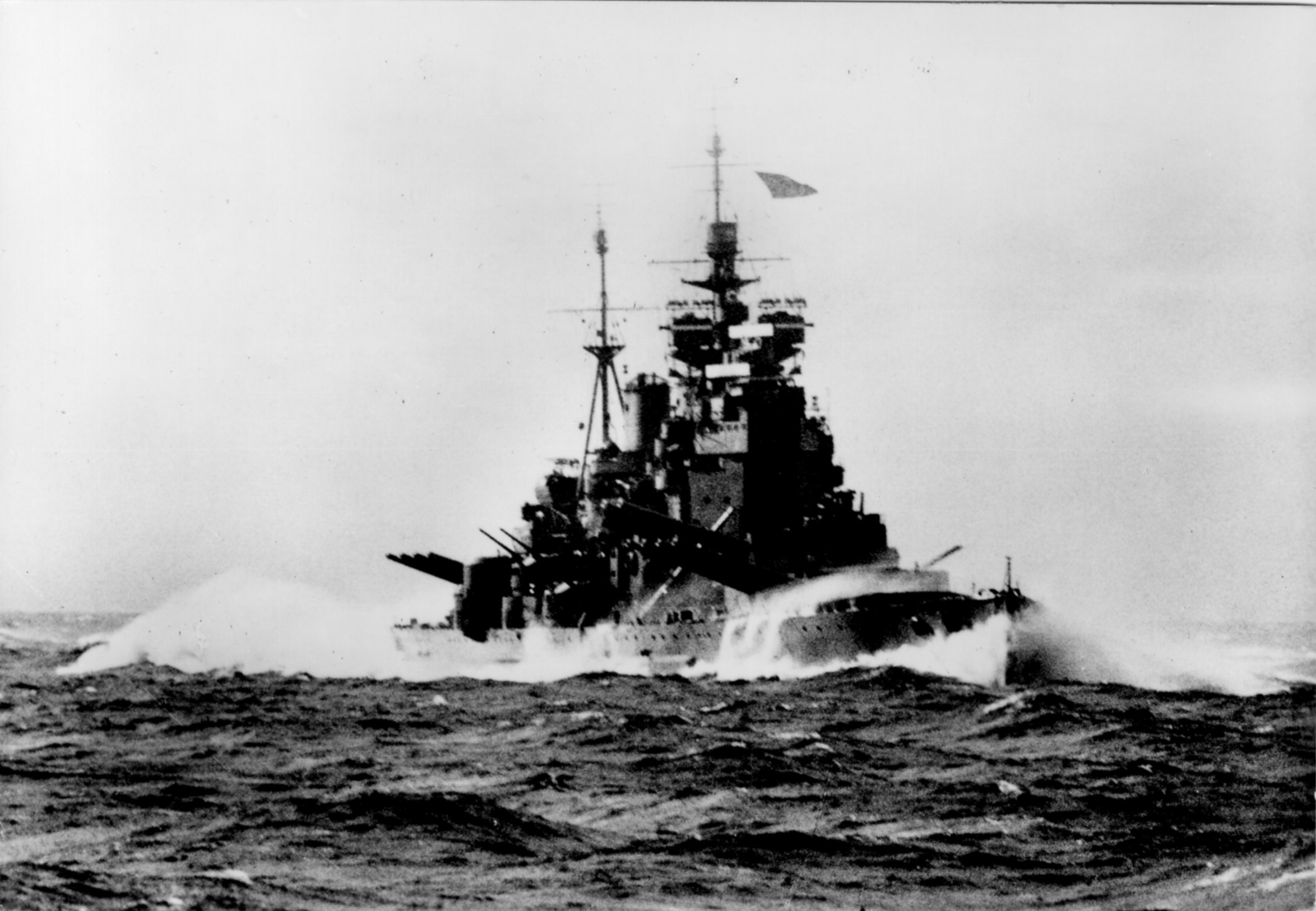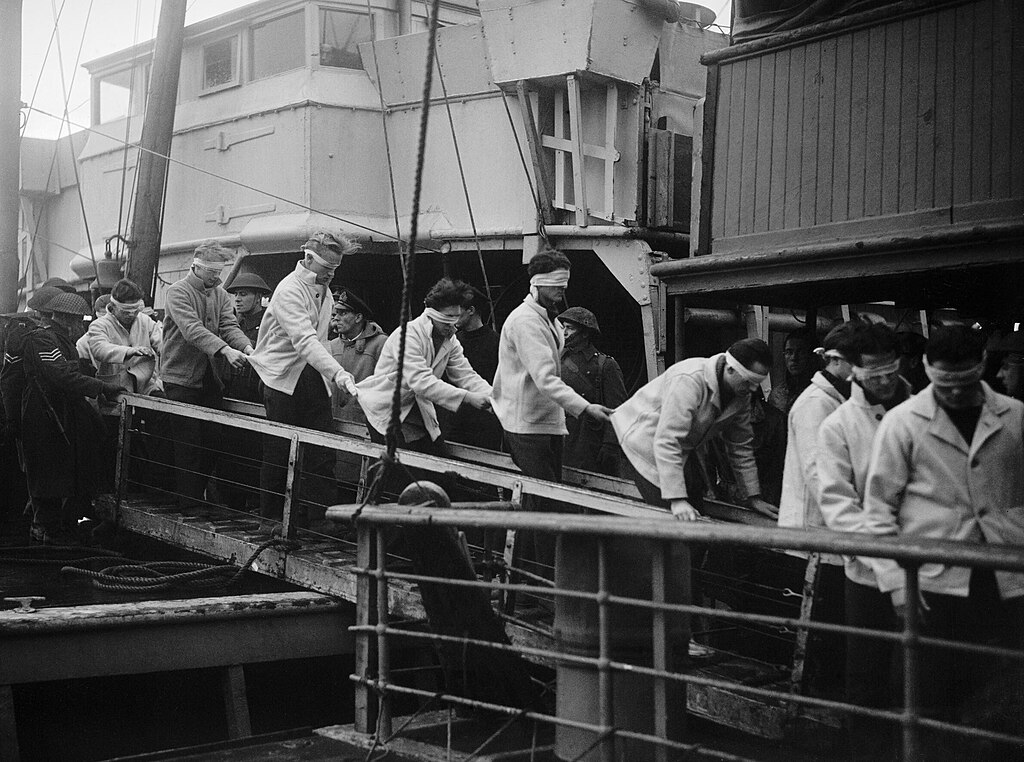WWII: Anniversary of the Sinking of the Battleship Scharnhorst

On December 23, 1943, the fifth Boxing Day at war with Nazi Germany, the last clash of ‘big gun’ ships took place in European waters.
In the darkness of the polar night, superior training, superior technology and superior force put an end to the career of Hitler’s ‘lucky ship’, Scharnhorst, sunk by the Royal Navy off the North Cape.
Just 36 of the 1,968 souls aboard survived, somehow rescued despite the stormy conditions as the Royal Navy upheld the words of Nelson: may humanity after victory be the predominant feature in the British fleet.
The Scharnhorst had long been a thorn in Britain’s side. In 1940 she had sunk carrier HMS Glorious returning from Norway. The following year, again with her sister Gneisenau, she struck at Atlantic convoys. And in February 1942, she slipped through the Dover Strait in the Channel Dash and returned to Germany.
From there she was eventually dispatched to northern Norway, joining Hitler’s flagship Tirpitz as a potent surface force, intended to strike at British convoys to Russia.
X-craft [midget submarine] attacks put Tirpitz out of action, but the Scharnhorst remained a threat and with Germany’s front in Russia crumbling in December 1943, the head of the Germany Navy, Karl Dönitz, resolved to commit her against the next convoy.
On Christmas Day 1943, German reconnaissance suggested a convoy – JW55 B – would come within range of Scharnhorst by Boxing Day morning.
The enemy, Dönitz declared, wanted to make Germany’s struggle on the Eastern Front even harder by delivering food and weapons to Russia. “We must help," he ordered. “Attack the convoy with Scharnhorst and destroyers. I believe in your offensive spirit. Heil und Sieg! [Hail and victory]”
At 7pm on December 25, the German force sailed. It planned to attack the convoy at 1000 hours the next day.
Unbeknown to Dönitz or task group commander Erich Bey was that their radio traffic was being read by the British and relayed to the huge naval escort accompanying the 19 merchant ships in the convoy, led by battleship Duke of York, several cruisers including HMS Belfast, and a clutch of destroyers and corvettes.

HMS Duke of York at sea (Royal Navy)
A cruiser force would block Scharnhorst’s route to the convoy. The Duke of York would cut off her route back to the safety of the fjords.
And so instead of finding the merchant ships on Boxing Day morning, instead the German battle-cruiser ran into Royal Navy warships. Shortly before 9.30am, HMS Belfast, then HMS Norfolk, opened fire.
It was the beginning of a ten-hour battle in which the Germans suffered nearly every disadvantage: outgunned, outnumbered, little or no intelligence, and with inferior radar to their foe.
Nevertheless, the Scharnhorst fought bravely and skilfully. She was damaged by the cruisers – and damaged Norfolk in turn.
But as she tried to flee for Norway, she ran into the jaws of the Duke of York and her 14in guns. Over two hours, the battleship scored over a dozen hits on her quarry – but Scharnhorst continued to fight.
Destroyers sent four torpedoes into her, reducing the battle-cruiser to about 10 knots and leaving her with just a single main turret still firing – which it did.
The final hour of Scharnhorst’s life were horrific. Pummelled by 14in and 8in shells fired by British warships which had closed to within 10,000 yards, she was subjected to a succession of torpedo hits.
At 7.45pm, she could take no more. She went down by the bow, her propellers still turning. Hundreds of German sailors took to the water. Just 36 were saved before the rescue operation was called off.
British casualties amounted to 21 dead, 11 wounded, and damage to Duke of York, Norfolk and one destroyer.
No ship in the convoy was attacked by the Germans. As JW 55 B continued on to Russia, the task force commander Admiral Sir Bruce Fraser signalled the Admiralty: Scharnhorst sunk.
The response was equally brief, but heartfelt: Grand, well done.

Survivors of Scharnhorst's sinking offloaded as prisoners of war in Scapa Flow (Royal Navy)
This article appears courtesy of Royal Navy News and may be found in its original form here.
The opinions expressed herein are the author's and not necessarily those of The Maritime Executive.
